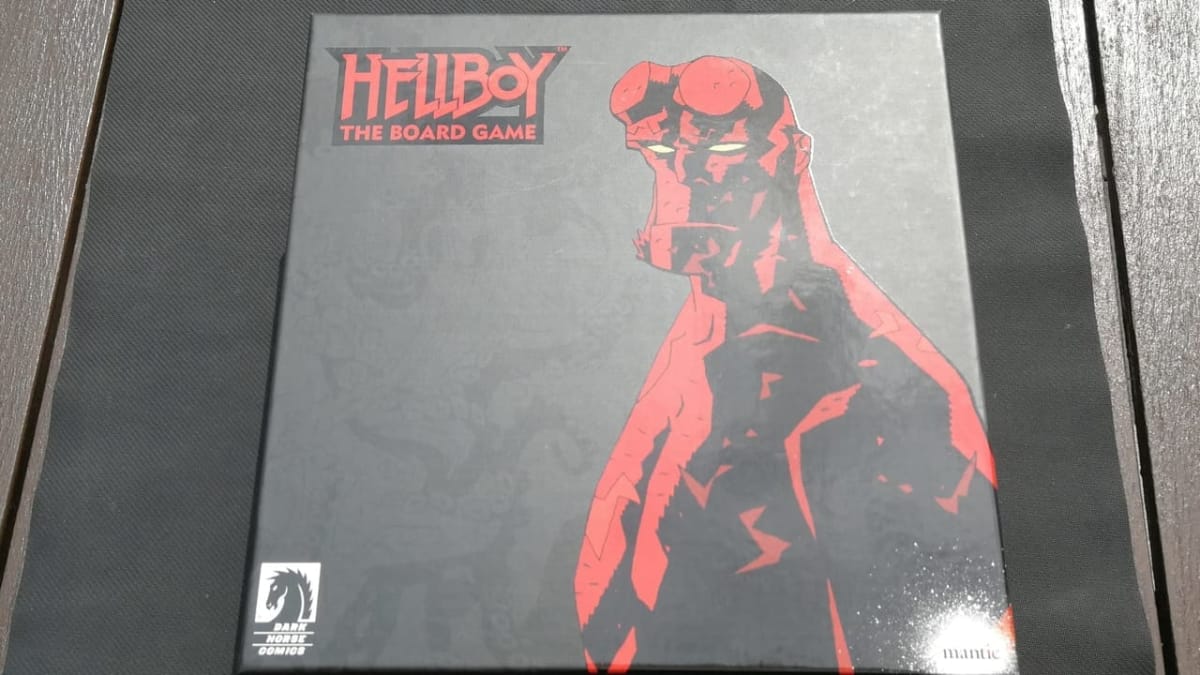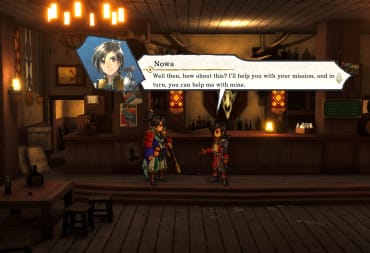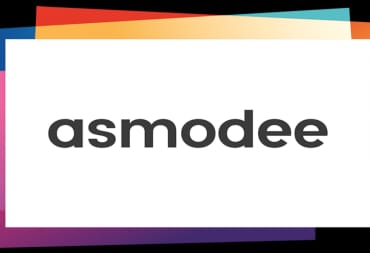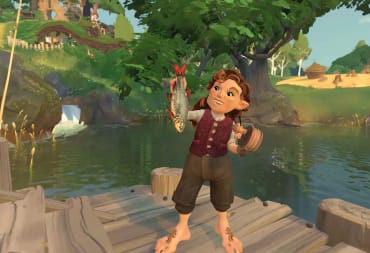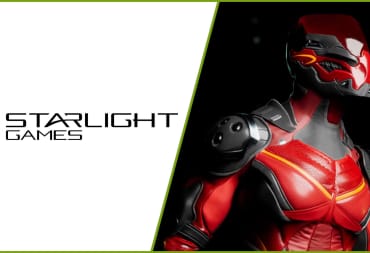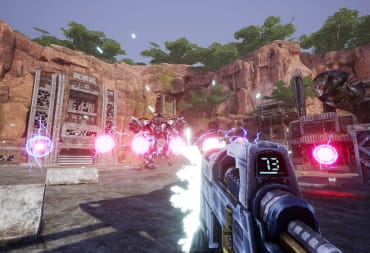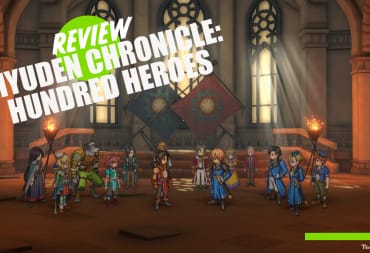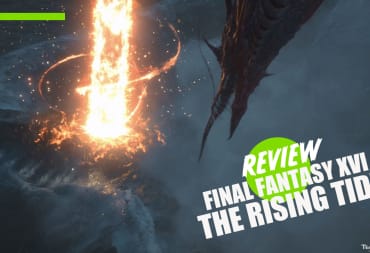Adaptations can be a tricky thing, especially when it comes to tabletop gaming. My own stance on video games being made into board games is well known by now, mostly because I won't shut up about it. However, I have never said that a board game adaptations of a pop-cultural icon can't work, and indeed Hellboy: The Board Game is exactly that. A legendary character and the stories which surround him have been adapted into a board game, and it has been infinitely more successful than any video game adaptation I have plated to date.
Hellboy: The Board Game is a dungeon-crawling board game from Mantic, a company perhaps more famous for the numerous war games which they publish. The whole thing has been licensed through Dark Horse Comics and borrows heavily from the comic books rather than the short stories or the various movie adaptations.
This choice to focus on the stories from the comics, as well as the accompanying visuals, is one of the first things which helps the game to stand out on the shelf. On the side of the box as well as the front there is a beautifully rendered picture of Hellboy in all his mostly-one-color glory. In fact, when you open the box you're greeted with another image of the main character, this time printed on the spare bits of sprue for the in-game tokens!
The level of attention to detail and presentation that made Mantic go to the effort of printing onto a bit of cardboard which most people will throw away is continued throughout the entire box. Everything comes inside rigid plastic inserts with enough space for everything that the game includes and then some extra besides. These inserts also include plastic tops, meaning that everything stays in place, no matter how much you may jostle the box. The presentation is astounding, and on top of that, it makes the experience of setting up and putting away the components as simple as lifting out small plastic trays filled with dice and figurines.
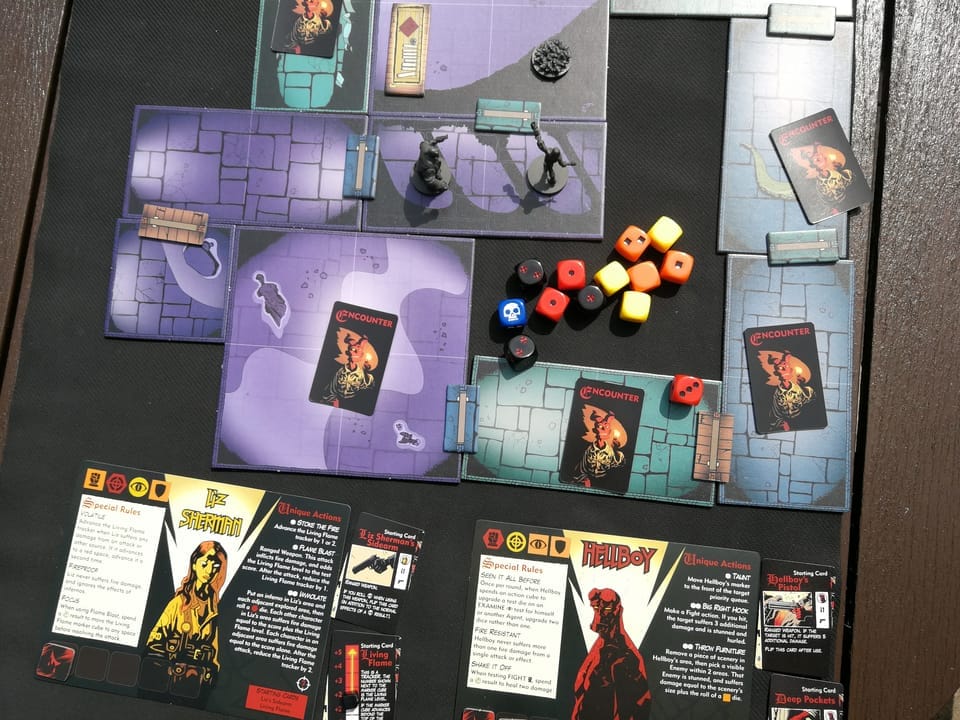
Moving onto the gameplay Hellboy: The Board Game doesn't do anything particularly groundbreaking or new, but that isn't necessarily a bad thing. The dungeon-crawling, modular dungeon tile using gameplay may be familiar, but it has been perfectly crafted and balanced to make it as enjoyable as possible.
The game comes with 6 cases to send your agents on, each printed with its own difficulty and length category, and each sealed in its own plastic package so they don't get mixed up. Each case has you set up the arrangement of tiles in a different configuration, as well as having different end scenarios and enemy placements.
Each player takes control of one of the 4 BPRD agents with unique skills and starting equipment, requisitions some gear or helpers, and sets out to solve whatever problem the Bureau has got lined up for them. Each game of Hellboy: The Board Game takes place over several phases, monster phase, agent phase, rest phase, doom phase, and end phase.
The monster phase is when an enemy's on the board activate, the agent phase allows players to act, the rest phase helps characters to recuperate, the doom phase advances the time limit and occasionally makes nasty thing happen and the end phase resets the board for another go around. The action of enemies is entirely performed based on a pre-determined set of tags on each enemy card. For instance, if a card has the 'brawler' tag it moves into melee range to try and attack, whereas the 'cowardly' tag has the enemy running away from danger.
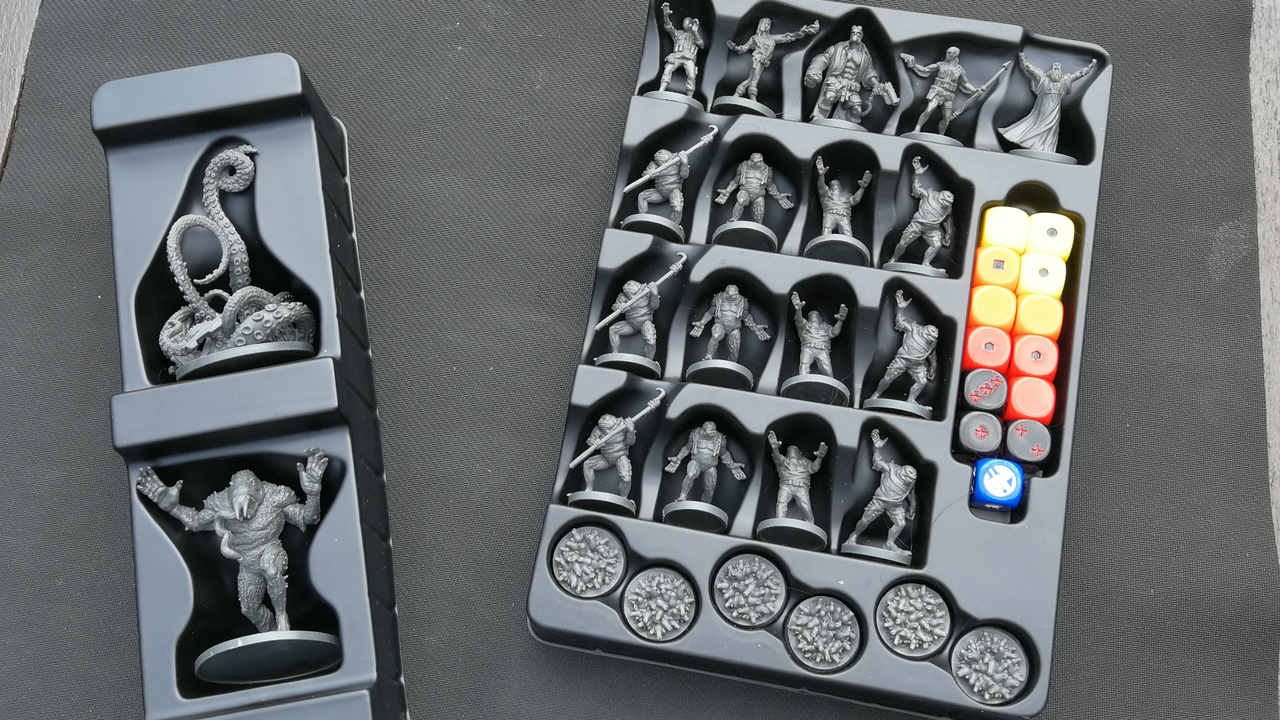
The player-controlled agents have 3 action cubes to use each turn, and they can be used in a variety of ways. Each player can move, fight, shoot, examine, interact and clear, by expanding a cube, and also gets access to the free actions of trading or opening up a new room of the dungeon if they're near enough to it. Most of the actions are pretty self-explanatory. Every dungeon-crawling game has movement and fighting actions and they work just the same way here. Examining is an action performed to give you clues about your mission, which will usually help you out in the big confrontation at the end of the mission. Interacting is only done when you come across a specific point of interest in a mission, or if there's a special piece of scenery.
Possibly the most unique action here is the clear action, which is done to clear the area of any hazards which might be blocking the path. The two hazards in question are infernos and frog spawns. Inferno tokens represent areas completely taken over by the fire, which will spread each turn if not taken care of quickly. The frog spawns are less dangerous because they only downgrade one of your dice during tests in their spaces, and they don't self replicate, but they do move around during each monster phase which makes them annoying little buggers to deal with.
In general, the gameplay in Hellboy: The Board Game sees you running around the board, stomping on any monsters you come across, and trying to cobble together some sort of clue about what is going on before a monster shows up and tries to stomp you to death. Most of the gameplay is the same no matter the content of the missions, each of the available characters has different strengths and weaknesses and the players must work together to destroy monsters and discover secrets before it is too late.
The interesting thing about the agents' turn is that there is no set order in which players have to go. It is up to players to discuss who is going when and which order will offer the best tactical advantages. For instance, on harder missions, it's often better to have a character like Hellboy with good defense and melee attack wade into battle. While he clears out enemies more observant characters like Abe Sapien can hang back and examine clues to make sure that the team doesn't run out of time for solving the case.
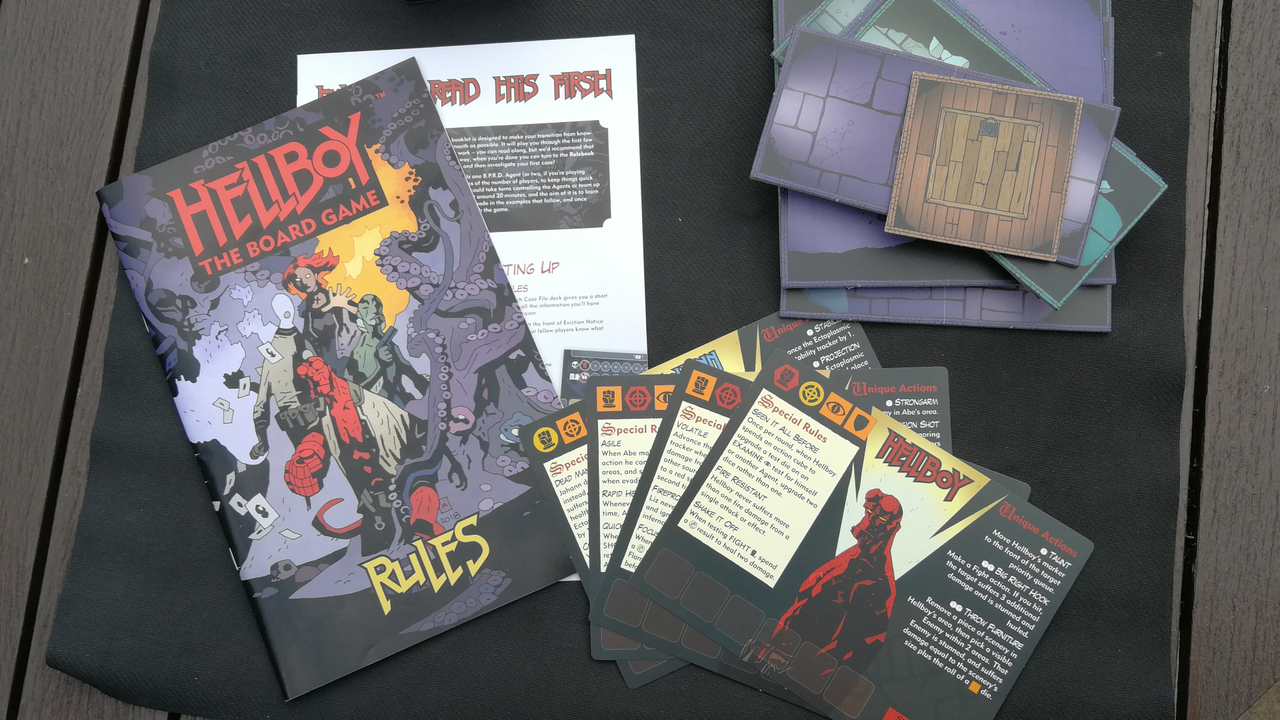
There is also a target priority system which is used to dictate certain enemy actions, which adds another tactical element to the gameplay. At first, the order is dictated by the threat level of each character, but each time a target is selected that target moves their character token to the back of the pack, meaning that they're less likely to be targeted in the future. Certain characters and equipment have abilities that allow them to effectively 'pull aggro', meaning they can force their token to the front of the priority queue to protect characters with weaker defense.
All of these minute little elements in Hellboy: The Board Game go together to give the players more of a fighting chance against the often brutal challenges they face. It transforms the game from a mindless dungeon-crawling combat-fest into a careful and thoughtful, but no less intense, experience. If you go into a lot of the harder cases without thinking you're going to go down and go down hard. The main reason for that? That would be the Doom deck.
Towards the end of each turn, the players must draw and read-out a card from the Doom Deck, a deck of cards that show the influences of opposing factions against the team. Some of the time these actions simply move the doom counter along, basically running down the timer until something big and probably ridden with tentacles comes along, but occasionally they can get down-right violent. One of the sneakiest examples is a card that drops a monster onto the square of the character who is at the back of the target priority queue, effectively picking the characters off from the back.
Once you've battled your way through hordes of frog monsters, each case inevitably ends in a confrontation with some sort of big horrible monster. These bosses are unique, in that instead of acting through the use of generic tags, they have their own, specially constructed, behavior decks which give them some unique features. While these confrontations are often pretty hard at first glance, you can give yourself the advantage if you've done enough research beforehand, and via the clever use of the right items and powers.
Once again Mantic seems to have brought their clever design to bear with these confrontations. Instead of each confrontation being a straight fight they sometimes come out of left field with a surprise win condition which goes beyond 'kill the bad guy'. These confrontations tie the entire case together and couldn't do a better job of it. Combine these confrontations with the lead up created by some clever tricks from the case file deck such as swapping the map up on the fly and the entire game ends up feeling like the freshest take on dungeon crawling that I've seen for years.
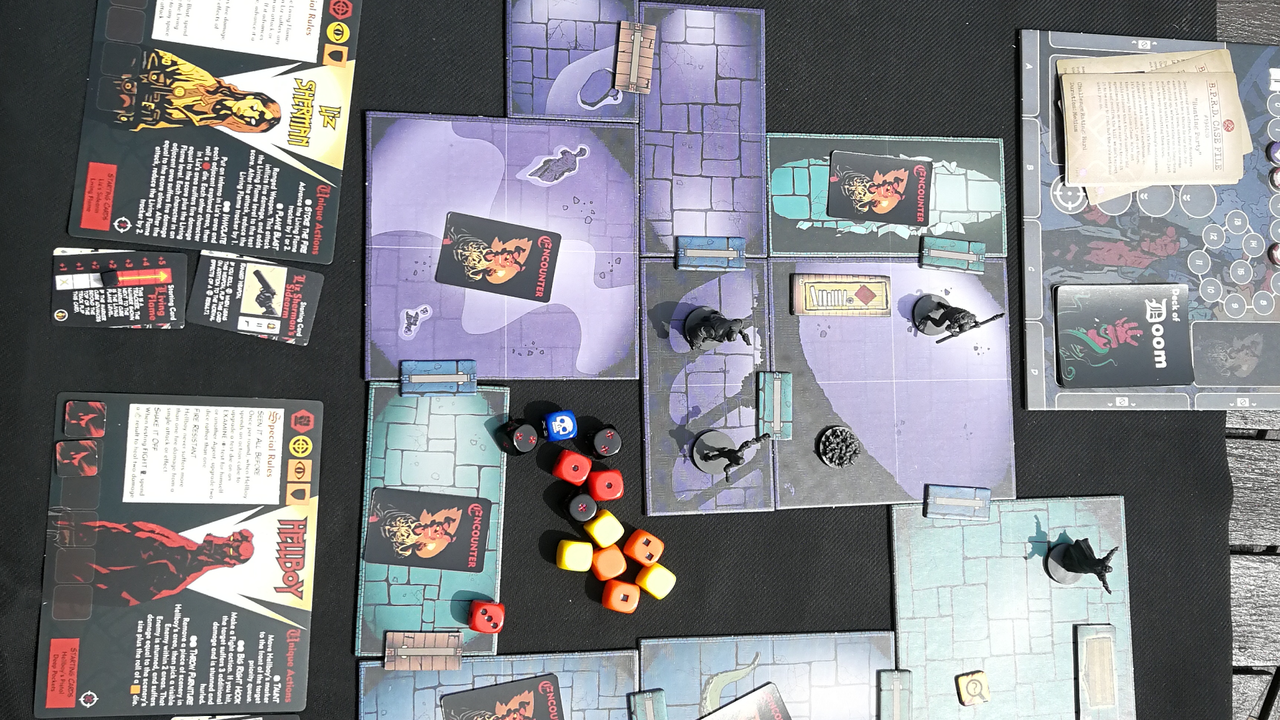
There are only a very few negatives for Hellboy: The Board Game. As a wise man once said, 'modern games are obsessed with modular dungeon tiles', and while they do offer a great amount of variety in map design, they do come with problems. If you're trying to play on a small or even medium-sized table then you'll probably struggle to find space for the sprawling dungeons, as well as the character cards, items, monster cards, and doom tracker. Also, while the trick of rearranging the board mid-game is quite cool thematically, it's quite problematic if you're playing in a tight space.
Another minor niggle for me was tracking monster health. You're supposed to use little red tokens and just sort of pile them near the monster who is damaged or put them on that monsters card. While either of those methods works okay when there's only one of each type of monster in a room, during a large-scale confrontation it gets pretty muddled. I would highly recommend a set of tiny D6 instead since they're easier to keep track of. As well as that, the tutorial does a terrible job of explaining the game. It basically runs you through the first case on autopilot, and it doesn't sell it at all. It actually makes a quite interesting and exciting game seem really dull and lifeless.
Finally, the art and figures in Hellboy: The Board Game are pretty damn stunning. Each of the miniatures are well sculpted and once again match their comic counterparts rather then the movie versions which I still want to reiterate was a very smart move. The cards once again all have comic-based artwork, and everything is rendered in bright, stark colors, in a similar cell-shaded style that the comics used to great effect. I'd say that the only negatives on the component side of things were that the cards came out very bent straight from the box, but a heavy book and some time did fix that. The final slight issue is that all of the regular enemies in the game are frog-people which is a bit dull, but in fairness, the comics did have a focus on big monsters rather than swarms, so I can see why this had to really be the case.
Overall, Hellboy: The Board Game is a stunningly well-done dungeon-crawler that has real attention to detail. I'd say that I've not played a dungeon-crawler which was this well put together in near enough a decade. Along with that, it has the unique style which was embodied by the comics it is based on, and even though it can be very difficult at times, it manages to mitigate that sort of issue with a stunning array of tactical options available to players at pretty much all times.
The Bottom Line:
Hellboy: The Board Game is a great iteration on the dungeon-crawling formula which manages to take the best parts of other games and perfects them. While the tutorial doesn't sell the game all that well, and there are some other petty niggles the game is downright outstanding, and the art style lifted directly from the comics makes it stand out visually. The number of tactical options available means that a clever team can get through even the toughest of challenges, and the different card decks keep players guessing, so you can never be quite sure what's around the corner.
Get This Game If:
You're a Hellboy fan looking for a great tabletop adaptation.
You're into dungeon crawlers and want a top-notch iteration on the genre.
You want some great miniatures of the main Hellboy cast.
Avoid This Game If:
You don't have much table space available.
You need a tutorial that sells you on the game.
You want a game which doesn't require you to think too much.
Techraptor reviewed Hellboy: The Board Game with a copy provided by the distributor.
Review Summary
Have a tip, or want to point out something we missed? Leave a Comment or e-mail us at tips@techraptor.net
